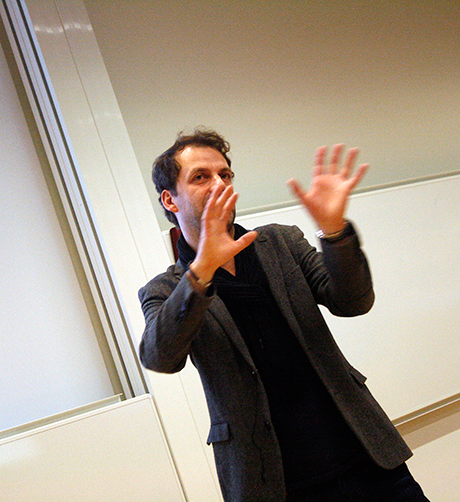More crimes reported to police despite falling crime rates
The school environment is the place where Swedish adolescents are most likely to commit or fall victim to acts of violence.
The school environment is the place where Swedish adolescents are most likely to commit or fall victim to acts of violence.
‘The school violence is a problem. But at the same time as the number of crimes committed at schools has decreased, the number of police reports filed has increased as a result of the ongoing juridification of the school environment,’ said Johannes Lunneblad, associate professor at the Department of Education, Communication and Learning, at an open lecture at the Faculty of Education in October. With support from the Swedish Research Council and the Swedish Crime Victim Compensation and Support Authority, Lunneblad and his research colleagues are exploring the notion of school as a crime scene. One of their aims is to study what happens when a head teacher decides whether to report a violation to the police and what other responses the school should implement.
With support from the Swedish Research Council and the Swedish Crime Victim Compensation and Support Authority, Lunneblad and his research colleagues are exploring the notion of school as a crime scene. One of their aims is to study what happens when a head teacher decides whether to report a violation to the police and what other responses the school should implement.
In 2015, schools in Gothenburg reported 185 cases of violence, threats or harassment to the police. Mainly lower secondary students are involved in the school violence, which can be divided into relational violence, verbal violence, physical violence and bullying. Somewhat contrary to the growing number of police reports filed, a report from the Swedish National Council for Crime Prevention shows that the adolescent crime rate has fallen, at least based on the teenagers’ own perceptions. A reduction by almost 50% can be noted for several of the following categories: theft/shoplifting, criminal damage, vandalism, knife possession, beating another person, intoxication, skipped school and believing it is ‘totally OK’ or ‘acceptable’ if a friend shoplifts.
‘Most adolescents quit committing crimes when they get older. A very small proportion continue the criminal behaviour. Nevertheless, society sees punishment and restitution as important for the victims, even if statistically only a small share of the young people will continue on the criminal path as adults,’ said Lunneblad.
Within the framework of the research project, he and his colleagues have interviewed about 50 teachers and school health workers at nine lower secondary schools. Their object of study was the assessments and strategies schools implement when upper secondary students are defined as crime victims:
• What actions and situations lead to the filing of a police report and how does the filing affect the subsequent measures taken by the school?
• How does the crime victim’s age, gender, ethnicity and social background influence the way the school handles the situation? Where is the responsibility for the violations placed?
• What do the school’s action plans look like and what routines and measures are typically implemented?
The final results are not yet available, but preliminary findings point to an uncertainty among school staff and that their explanations for why crimes are committed differ between both schools and different types of schools.
Some interviewees questioned the point of filing a police report since the police will not respond anyway if the perpetrator is younger than 15 years of age.
‘The reason for filing a report in those cases can be to signal that the problem has been identified and that social services may become involved,’ says Lunneblad.
The lecture series, called An Hour at the Faculty of Education, consisted of four open lectures held in October.